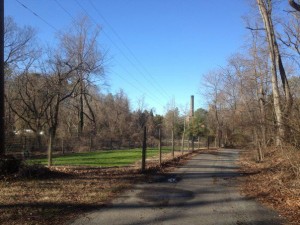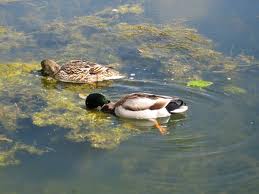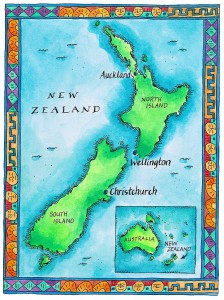 “Sometimes, if you stand on the bottom rail of a bridge and lean over to watch the river slipping slowly away beneath you, you will suddenly know everything there is to be known.” Winnie the Pooh really knew what he was talking about when said this, because it’s exactly how I feel whenever I see the James. Whether I am running on the road parallel to the river at Pony Pasture, basking in the sun on the rocks at Belle Isle, or cautiously meandering my way across the Mayo Island railroad bridge, watching the water of the James rush by offers me, and I’m sure all of us, a sense of clarity and solace that is quite difficult to find anywhere else. Each time I head down to the river, I am reminded of all that I have learned this year in Earth Lodge; whether it be the scientific material, such as how to calculate the water budget and why nitrogen and phosphorous are detrimental to the water, or the historical material, such as how industrial owners used the force of the river to power their flour mills, or the philosophical material, such as how the idea of “wilderness” can be considered a social construct – they all seem to follow the same premise. Going through my old blog posts and reflecting on what we have learned this year, I have found that, similar to the way all the water and materials in a watershed drain to a single point, everything we’ve learned this year seems to come together to a single point, a common theme – connectivity.
“Sometimes, if you stand on the bottom rail of a bridge and lean over to watch the river slipping slowly away beneath you, you will suddenly know everything there is to be known.” Winnie the Pooh really knew what he was talking about when said this, because it’s exactly how I feel whenever I see the James. Whether I am running on the road parallel to the river at Pony Pasture, basking in the sun on the rocks at Belle Isle, or cautiously meandering my way across the Mayo Island railroad bridge, watching the water of the James rush by offers me, and I’m sure all of us, a sense of clarity and solace that is quite difficult to find anywhere else. Each time I head down to the river, I am reminded of all that I have learned this year in Earth Lodge; whether it be the scientific material, such as how to calculate the water budget and why nitrogen and phosphorous are detrimental to the water, or the historical material, such as how industrial owners used the force of the river to power their flour mills, or the philosophical material, such as how the idea of “wilderness” can be considered a social construct – they all seem to follow the same premise. Going through my old blog posts and reflecting on what we have learned this year, I have found that, similar to the way all the water and materials in a watershed drain to a single point, everything we’ve learned this year seems to come together to a single point, a common theme – connectivity.
Connectivity is something that I did not have a firm grasp on before this year. Sure I figured that lots of entities must be connected, but I never realized just how strong these connections could be. I had no conception of the connection between the amount of impervious surfaces fifteen minutes from any water source and the nutrient level in that water, the connection between the riparian forest along a river and the temperature of that river, the connection between a small park and the migration of a small mammal, and the connection between the quantity of trees in an area and the hydrologic cycle – I could go on forever. Developing insight into these countless connections has helped me to better appreciate the world around me and to notice things I never would have noticed before, such as the water sources of the island of Kauai stemming from Mount Wai’ale’ale that I noted in my blog post “Overflowing Water” or how our campus appeared to be a “stepping stone” for the migration of visiting birds (which I have recently determined to be cormorants) that I noted in my blog post Spring Visitors. Learning more about ecological services, watersheds, and Richmond’s relationship to our watershed, has not only allowed me to identify countless connections exhibited in my surroundings, but it has allowed me to develop a strong relationship and connection with those surroundings.
One of the most important things that has helped me connect with both UR’s campus and the city of Richmond has been being cured of my place blindness. Place blindness refers to the idea of being unmindful of what makes the region one occupies a “place” and taking granted the important characteristics that define that place. Before this year, I was most definitely feel victim to this type of blindness. It was not until my place blindness was pointed out to me in Earth Lodge and I began to learn about my “place” that I began to make strong connections with it.

One connection that I have developed over this past year and that perhaps I foresaw the least is the relationship I have cultivated with UR’s campus. While the fact that I’d be learning about Richmond and the James were a little more obvious to me considering I was enrolling in the class “Geography of the James River Watershed,” the chance to learn about the place I was beginning to call my second home was something I had not predicted. However, it is something that I would not give up for the world. This connection really began to blossom after our first class this semester. I remember being completely baffled when we were led to Little Westham Creek, something I had neglected to notice for the whole year and a half I had been living on campus. Like Kevin Alloway, getting to learn about the smaller watershed of our campus “showed me how our campus – which often seems incredibly isolated – clearly connects to the outside world via water systems” (A Secret Stream). Also, learning about the significance of the Gambles Mill Trail, a trail that had always been part of my running route but I had no idea even had a name, and spending time at my reflection spot, observing the changes that occur on campus with the progression of time, have both helped reinforce my relationship with UR’s campus (The Giving Tree).

Another process that has really helped strengthen my connection with UR’s campus has been working on our final project. For part of our final project, Kenta, Taylor, Bill, and I are creating interpretive signs that provide information on the ecology and geography of the Westhampton Lake and Forest.The sign that I have been put in charge of designing concerns the different species that inhabit both the lake and the land around it. Researching and learning more about these species has really helped me to understand better why they do certain things and why our campus is the perfect habitat for them. For example, I have learned that mallard ducks are dabbling ducks. This means that instead of diving into the water for food, they feed on the algae and plants near the surface, which explains why they are always congregated around the edges of the lake instead of in the center like the cormorants and mergansers. I hope that putting these signs up will help give other students and faculty a better understanding of our campus and allow them to strengthen their connection with campus like we all have.
 I really hope that the skills I have acquired in both making connections with my surroundings and in identifying the connections around me will help me to find those connections in the future, especially when it comes to my fast-approaching adventure to New Zealand. These relationships I have developed have allowed me to find my home here in Richmond, and I am hopeful that I will be able to do the same abroad. Despite my anxieties, I am comforted by the assurance that the connections I have began to build here in Richmond will remain strong upon my return.
I really hope that the skills I have acquired in both making connections with my surroundings and in identifying the connections around me will help me to find those connections in the future, especially when it comes to my fast-approaching adventure to New Zealand. These relationships I have developed have allowed me to find my home here in Richmond, and I am hopeful that I will be able to do the same abroad. Despite my anxieties, I am comforted by the assurance that the connections I have began to build here in Richmond will remain strong upon my return.
